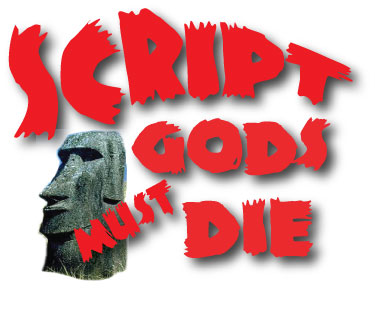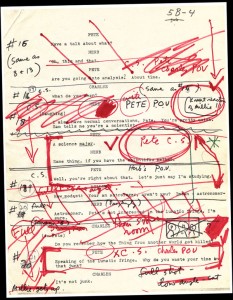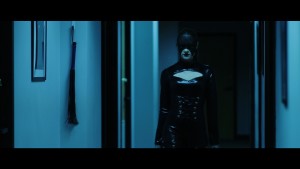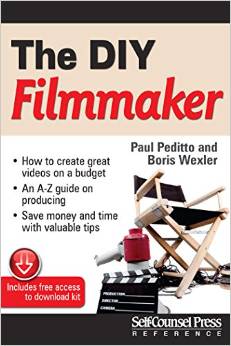In last week’s post I went over “Rules” 1-5 for Micro-Budget. These aren’t rules at all. You can break any one of them and make a killer movie. I’m just giving guidelines on how you can save some $$$$ when you’re making your own movie.
The stills are from Chat, the 44k movie my partner Boris and I made a couple years back. It can be found on iTunes here, or VUDU here, Playstation, and elsewhere. If you want to learn much more about the making of this movie and D.I.Y Filmmaking, go here.
Onto 6-10 of the Micro-Budget hit list…
- #6: EXTERIOR NIGHT SHOTS- DON’T WRITE ‘EM!
Especially in urban settings, so many issues are beyond the control of a small-budget movie with limited cast/crew. Those exterior night scenes are so easy to write, and so much harder to pull off. I’d avoid them unless the story absolutely dictates it.
On the only night of exteriors for Chat, I wrote down this list of sounds that obliterated our efforts to do just one dialogue scene on Chicago streets:
“The beeping gate of the parking garage that rang out like a warning siren on Star Trek Deep Space 9. The drunken Erie Street bar hoppers whose fascinating drunk speak babble was oh so more important than respecting some dinky micro-budget trying to make its day. The passing EMT van, cop cars, cop wagon, limo, pizza delivery guys, and a dozen other rubberneckers who slowed vehicles to a crawl to gape out on what might have been the filming of the final first-season episode of Chicago Fire, but alas, was only us. PA’s and the writer himself were dispatched as living lawn chairs in the great Chicago tradition of saving cleared parking spaces. The sirens in downtown skyscraper chasms howling…The skateboarders’ click-clacking…The Harley-engines revving…The small dogs of high-rent paying owners, late-night walked whilst yip-yapping…The constant Muddy Waters from yet another ubiquitous Friday night sports bar…”
Control what you can control. Limit those exterior night shots!
- #7: LIMIT PRINCIPAL AND SECONDARY CHARACTERS
Even if the story you’re writing is character-driven, it doesn’t mean you need 10 principal and secondary characters to tell it. I would suggest limiting key characters to 5 and under. SAG Ultra-Low Budget is $125 a day, but your producing team is not spending that on 10+ actors, not and maintain a budget. And you don’t want to get into the habit of paying some of your actors and not others– word will get out and lead to D R A M A.
Make sure every character has a purpose. Limit the number of extras, and crowd scenes. Don’t write in Wrigley Field, don’t write in Union Station. Whether or not these can be “stolen” is a debate for another day. I’m not forcing producers to find a hundred extras unless there’s no movie without them.
- #8: KIDS, WEATHER, ANIMALS, BLOOD, VFX- DON’T WRITE ‘EM!
Guidelines, not rules. You can write a child into your script! You watched 58 YouTube videos and can handle green screen? Cool. Go ahead and write in effects. Just be prepared for what that means, $$$-wise.
Maybe you know someone who can pull off VFX. Or a really well-behaved dog that just has to go into the movie. You’re the writer, you can do what you want– it just has to be paid with money that is, very likely very tight, and coming from your pocket, so be certain about these details.
It’s your responsibility to know that the gun play you innocently wrote in will require a gun wrangler to oversee and train the actors. That it requires a Chicago Police Department officer on set for the full day. Or that Chicago cops get double-time if your shooting day happens to stretch to 15 hours. Or that you need someone to convincingly mix blood and apply it to the actors. Maybe you didn’t think about all these when you wrote those two simple scenes into the script. What you write has to be made to happen, and that costs $$$.
Ask yourself: Does the VFX need to happen to tell the story, to not compromise the movie’s vision?
Kids are only allowed to work half a day on a film set, and you have to pay for a child Welfare Officer or Teacher to be present at all times. Whenever you write a kid in your script, you’re paying for an adult who will not appear on screen.
With all respect to the good people of PETA, I still have nightmares when, shooting my first film Jane Doe, I wrote a scene that required us to pin a cockroach down on a doughnut. This was a PETA issue. I just had to have the main character bite down on a cockroach-infested doughnut to impress his lady love. Those cockroaches weren’t street bugs either. They had to be imported–at a cost–and pinned down with PETA’s consent to get the shot. The damn cockroaches were lousy actors and didn’t cooperate at all costing more time. By the time we finished shooting I wondered why the f*&^ I wrote it in at all.
- #9: PAGE COUNT= SOUTH OF 100
What? I’m saying you can’t write a 105 page micro-budget script? Nope. I’m saying it would ideal if the page count were south of 100. Every page costs $$$. Your mission, Mr. Phelps, is to knock down the page count to the best of your ability. This takes us back to rewriting, to developing a cut instinct– the reductive mind you need to attack the script.
First draft, no limits, push out, give us your vision exactly as you see it. Page count doesn’t matter. Follow up drafts, rewriting begins, cutting down page count, additions only where necessary.
White Production draft (the shooting script): Every scene boiled down to necessity (meaning, if you remove it, the story falls apart), trimming every scene, every action line, every line of dialogue for necessity.
My partner Boris Wexler has a rule of thumb: 8 pages a day. Dialogue-heavy scenes, you can probably make that. If I’m spending $2,500 per day on an 18-day shoot and I cut the page count from 106 to 90, I just saved…? Yep, $5,000 bucks. When it’s your money, this gets real fast and killing your darlings gets much easier. Cut that script down to sub-100.
- #10: “STORY IS FREE”
Always loved this simple expression from John August. While there might be some downside to not being able to write in Transformers-style stunts, the upside is the writer of micro-budgets is utterly essential in the process. You’re compensating for the “money hose” with story. People will always love storytelling. In the age of the Marvel Universe, they are starved for powerful and unique work. Writing micro-budget means character-driven, dialogue-heavy, juxtaposition of story elements the world has never seen before.
Eraserhead over Lara Croft, Tomb Raider. Primer over Battleship.








